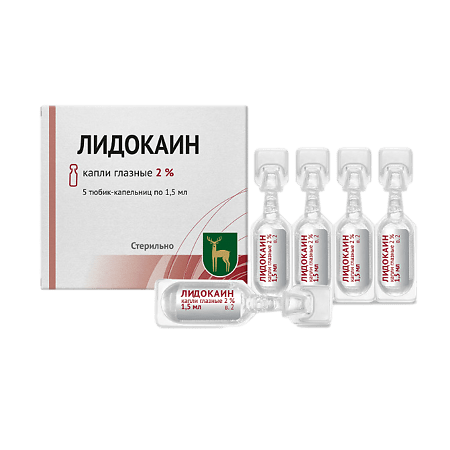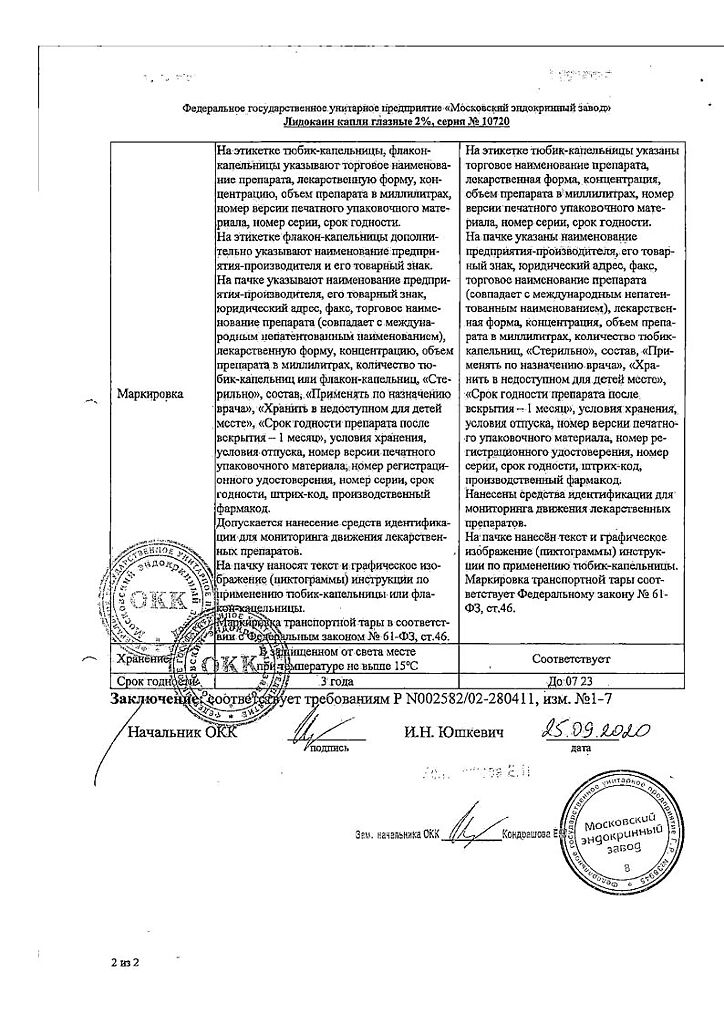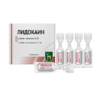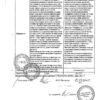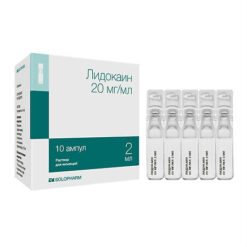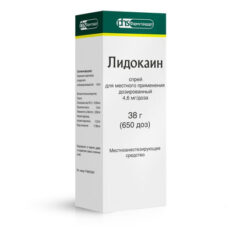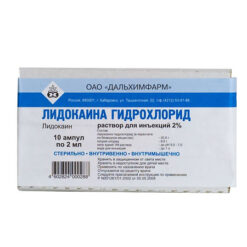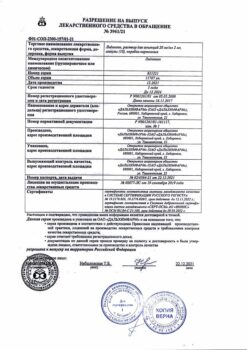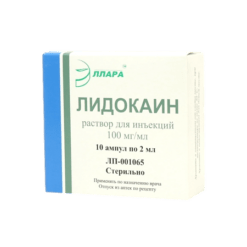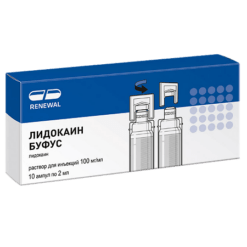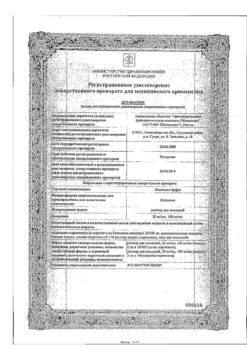No products in the cart.
Lidocaine, eye drops 2% 1.5 ml 5 pcs
€0.84 €0.76
Description
Lidocaine is a local anesthetic and antiarrhythmic drug.
The antiarrhythmic activity is due to inhibition of phase 4 (diastolic depolarization) in Purkinje fibers, reduction of automaticity, suppression of ectopic foci of excitation.
The rate of rapid depolarization (phase 0) is not affected or slightly reduced. Increases membrane permeability to potassium ions, accelerates the process of repolarization and shortens the action potential.
It does not change the excitability of the sinus-atrial node and has little effect on conduction and myocardial contractility. When administered intravenously it works quickly and shortly (10-20 min).
The mechanism of local anesthetic effect consists in stabilization of neuronal membrane, reducing its permeability to sodium ions, which prevents the emergence of action potential and impulse conduction.
Possible antagonism with calcium ions. It is rapidly hydrolyzed in a weakly alkaline environment of tissues and after a short latent period is active for 60-90 minutes. During inflammation (tissue acidosis) anesthetic activity decreases. It is effective for all types of local anesthesia. It dilates blood vessels. It has no irritating effect on the tissues.
When using the drug in pharyngeal or nasopharyngeal surgery the pharyngeal reflex is suppressed.
The drug is good at slowing the cough reflex, which can lead to bronchopneumonia, by reaching the larynx and trachea.
The action of lidocaine in aerosol form develops within 1 min and lasts 5-6 min. The desensitization achieved slowly disappears within 15 min.
It is evenly distributed in the body. It penetrates through the placental barrier.
Indications
Indications
Used for pain relief before surgery:
• measuring intraocular pressure (tonometry);
• gonioscopy;
• diagnostic scraping of the conjunctiva;
• short-term surgical interventions on the cornea and conjunctiva (including removal of foreign bodies and sutures from the cornea and conjunctiva);
• in preparation for ophthalmological operations.
Pharmacological effect
Pharmacological effect
Lidocaine is a local anesthetic and antiarrhythmic drug.
Antiarrhythmic activity is due to inhibition of phase 4 (diastolic depolarization) in Purkinje fibers, a decrease in automaticity, and suppression of ectopic foci of excitation.
The rate of rapid depolarization (phase 0) is not affected or slightly reduced. Increases membrane permeability for potassium ions, accelerates the repolarization process and shortens the action potential.
Does not change the excitability of the sinoatrial node, has little effect on the conductivity and contractility of the myocardium. When administered intravenously, it acts quickly and briefly (10–20 minutes).
The mechanism of the local anesthetic effect is to stabilize the neuronal membrane, reducing its permeability to sodium ions, which prevents the occurrence of action potentials and the conduction of impulses.
Antagonism with calcium ions is possible. It hydrolyzes quickly in a slightly alkaline tissue environment and, after a short latent period, acts for 60–90 minutes. With inflammation (tissue acidosis), anesthetic activity decreases. Effective for all types of local anesthesia. Dilates blood vessels. Does not irritate fabrics.
When using the drug in pharyngeal or nasopharyngeal surgery, the pharyngeal reflex is suppressed.
Reaching the larynx and trachea, the drug effectively slows down the cough reflex, which can lead to bronchopneumonia.
The action of lidocaine in the form of an aerosol develops within 1 minute and lasts 5-6 minutes. The achieved reduction in sensitivity slowly disappears within 15 minutes.
Distributed evenly in the body. Penetrates through the placental barrier.
Special instructions
Special instructions
Do not touch your eyes while the drug is in effect.
Contact lenses should be removed before instilling eye drops; Lenses can be inserted no earlier than 30 minutes after instillation.
Impact on the ability to drive vehicles and machinery
If side effects after using the drug do not cause discomfort, there are no restrictions on driving vehicles, machinery and engaging in other hazardous activities that require special attention and quick reactions.
Active ingredient
Active ingredient
Lidocaine
Composition
Composition
1 ml contains
Active ingredient:
lidocaine hydrochloride – 20 mg
Excipients:
benzethonium chloride,
sodium chloride,
water d/i.
Contraindications
Contraindications
Sick sinus syndrome.
Severe bradycardia.
2nd and 3rd degree atrioventricular block (except when a probe is inserted to simulate the ventricles).
Cardiogenic shock.
Myasthenia.
Increased individual sensitivity to lidocaine.
History of epileptiform seizures caused by lidocaine.
Severe liver dysfunction.
When using plaster of Paris as an impression material in dentistry, the aerosol is contraindicated due to the risk of aspiration.
Side Effects
Side Effects
Local allergic reactions, conjunctival hyperemia, burning sensation during instillation, headache.
If any of the side effects indicated in the instructions get worse, or you notice any other side effects not listed in the instructions, tell your doctor.
Storage conditions
Storage conditions
In a dry place protected from light
Shelf life
Shelf life
2 years.
Manufacturer
Manufacturer
Moscow Endocrine Plant, Russia
Additional information
| Shelf life | 2 years. |
|---|---|
| Conditions of storage | In a dry place protected from light |
| Manufacturer | Moscow Endocrine Plant, Russia |
| Medication form | eye drops |
| Brand | Moscow Endocrine Plant |
Other forms…
Related products
Buy Lidocaine, eye drops 2% 1.5 ml 5 pcs with delivery to USA, UK, Europe and over 120 other countries.

